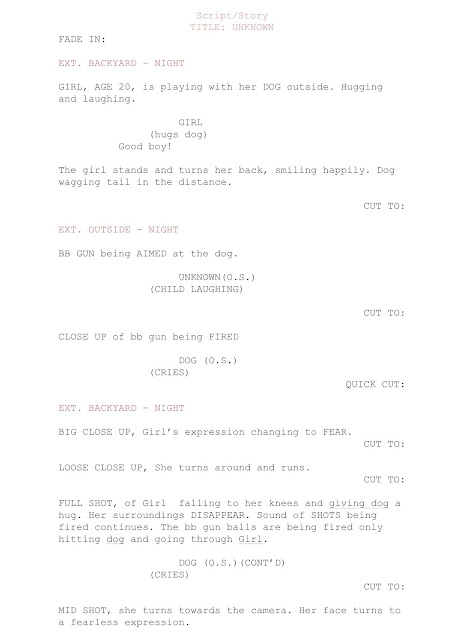Animation on Animal Cruelty - Progress
To begin with, during the first term we were given a series of short projects, each on a broad set theme (walking / the city / space; identity; nature / animals / ecology). We have to choose one that most interests us and pursue it or which I’d most like to develop – and expand further length through both further graphic media work, and through further contextual research.
Therefore, I have chosen to pursue the broad set theme of Nature. I did really well on my nature project because it was something I found value and importance. My last project I wanted to focus on the domestication of wild animals and how this is a form of abuse. The human want for domination. I considered other forms of animal topics like animal equality, animals used in research, animal sheltering issues, factory farming, extinction and more.
I figured I’ll talk about them all as they are tied into animal cruelty in the end. I also want to look into critically endangered animals topics because of the film ‘Anthropocene: the Human Epoch’ where they talk about the near to extinction animals in a cinematic, eye opening way.
I will explore the topic of animal cruelty as a whole and see where it’ll lead me in my research also I have my own experiences with it. Importantly animal cruelty is suffocating to me because sometimes we feel powerless and useless to this issue yet our species is supposed to be the strongest. “Surveys suggest that those who intentionally abuse animals are predominantly men under 30, while those involved in animal hoarding are more likely to be women over 60.” (The Humane Society of the United States. 2021.) This fact is disappointing but not surprising, it will also tie into other subtopics, I will look into facts like these and explore more on this issue.
After exploring what I wanted research in my project I concluded with animal cruelty and the idea of feeling powerless and useless against the issue. I came to this conclusion due to my on personal experiences, For explain when I used to live in Madeira and had two dogs, I heard my dog crying because he was being shot with a BB gun, however all I could do is bring my dog inside, because the someone was shooting from up the hill and there was no way for me to know where it was coming from to press charges. Finally the feeling of being powerless comes back and keeps coming back because that is the case with most animal cruelty cases, no proof, no justice.
In addition, the sketches above is me exploring the style and feel of the animation I’m going to do. The blue for a sad setting and the red for an impact. I think this is key, emotion is a way to change things or simply make someone care and only art can achieve this. From what I learned last project was the artist Angelia Singer also takes this approach with her strong controversial sculptures just like she says “it should be done strongly” (Steve Baker, Artist/Animal. p.177) for such a powerful issue, it shouldn’t be done simply either. So, to continue with this inspiration I wanted to include my own experience to have that strong impact.
On the other hand, when I looked into William Hogarth ‘The Four Stages of Cruelty’ (1751) it helped link to my last project because it shows a man growing up as an animal abuser and in the end the animal gets his revenge by eating it’s abusers flesh, which was my graphic media poster. All about getting revenge. However, there was no revenge in my experience and this is the truth with most cases, so with this project I wanted to show how the animals don’t get their justice like we constantly dream.
Above is a script I did to organise my plan for my animation. I have a A level degree on media studies and I used this skill for my animation because, having a script in hand with every shot and every action planned out in advance, allows the video to be created relatively quickly, saving on time to clean up imperfections.
Storyboard:
After reading the two reading reports and examining them in detail I’ve concluded I enjoy finding out the psychology behind harmful and beneficial relationships between humans and other species. I wanted to look at the bad, good and the in between when it comes to our relationships with animals. I will also represent my new ideas brought up from my reading reports in my animation for my graphic media work. My thought process is still about animal cruelty but after reading Ascione’s reasons for those children who love animals and seen them as safety, made me think I need to find out first the good reasons for having pets in ones life, instead of jumping right into animal cruelty, to truly understand the mind of an young abuser and understand why it takes place. So this is why my next step is looking into Donna Haraway, Companion Species Manifesto.
References;
The Humane Society of the United States. 2021. Animal cruelty facts and stats. [online] Available at: <https://www.humanesociety.org/resources/animal-cruelty-facts-and-stats> [Accessed 28 February 2021].
Steve Baker, Artist/Animal (Minneapolis: University of Minnesota Press, 2013), pp. 144–179.












Comments
Post a Comment